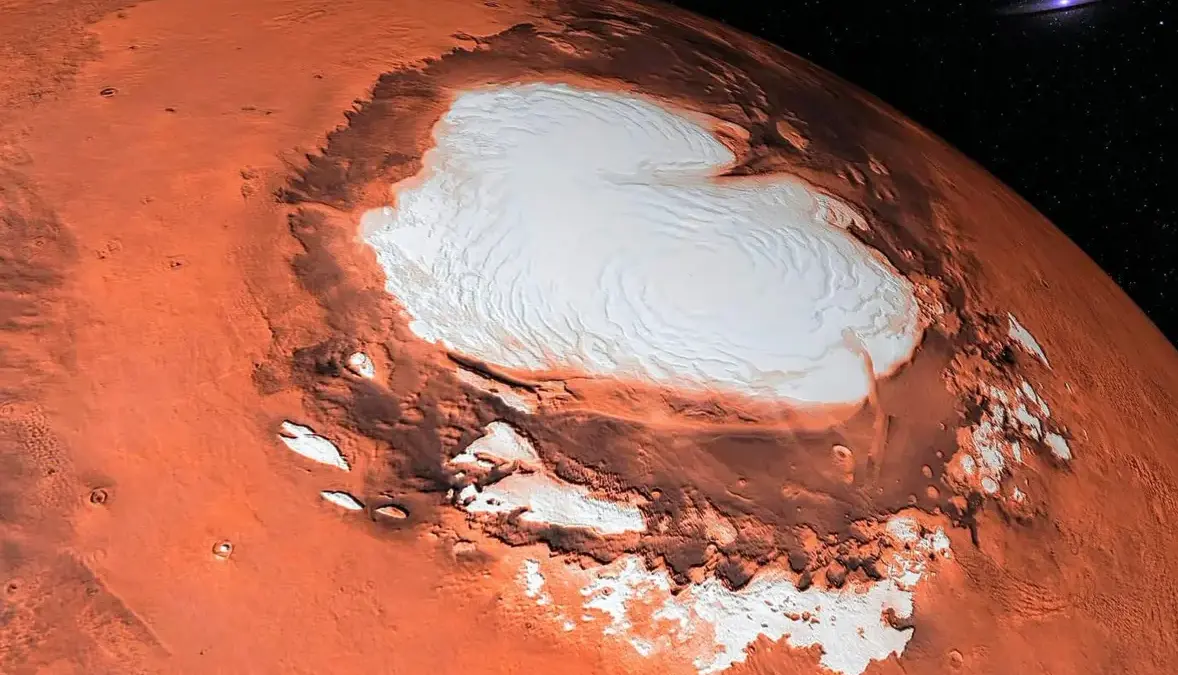Radiation “erased” traces of possible life on Mars
- December 13, 2024
- 0
There are more and more places on the Red Planet where organic traces of ancient life may be preserved. But the authors of the new study doubt the
There are more and more places on the Red Planet where organic traces of ancient life may be preserved. But the authors of the new study doubt the

There are more and more places on the Red Planet where organic traces of ancient life may be preserved. But the authors of the new study doubt the success of the research: It turns out that potential signs of life are destroyed by cosmic radiation faster than previously thought. The salty environment, which is often seen as promising in terms of preserving signs of life, accelerates these processes the most.
Robotic devices hovering on the surface of the fourth planet far from the Sun are looking for signs of life by analyzing surface rocks. Data obtained by the Curiosity and Perseverance rovers have allowed us to learn more about the conditions that prevailed on the Red Planet in the past and where biomarkers that are indicators of the presence of life may have been preserved.
But there is a problem: rocks and soils on Earth are protected from the effects of cosmic radiation by the atmosphere and magnetic field, but the Red Planet has existed without their protection for about four billion years (the Martian atmosphere is 160 times less dense than Mars). on Earth). The authors of a new study published in the journal AstrobiologyHe concluded that long-term exposure to cosmic rays (high-energy particles that penetrate deep into the Martian soil) could lead to faster destruction of organic molecules.
After exposing various classes of organic molecules to gamma radiation (an analogue of cosmic rays) and studying their behavior both in their pure form and in the presence of sodium, potassium and magnesium salts, a research group led by Anais Roussel from Georgetown University (USA) in laboratory conditions discovered hoptans, discovered that lipid biomarkers such as stearans, alkanes, and fatty acids can be broken down much more quickly. than previously thought.
In particular, lipid signatures were destroyed 6-20 times faster than amino acids, and when salt was added, the degradation rate increased several times more. This means that even if life once existed on Mars (especially in salt-rich Martian soil), most traces of life in surface rocks disappeared long before we tried to detect it.
The laboratory experiment also revealed the formation of intermediates (such as aldehydes and alkanes) during the radiolysis of fatty acids. At the same time, more complex lipids either “evaporated” from the material, decomposed into simpler volatile compounds, or evolved into structures so complex that standard analytical methods could not capture them.
The results of the new study have important implications for the selection of landing sites for future Mars missions: Searching for signs of preserved life on the Red Planet should be done in places less exposed to radiation, such as lava tubes. Additionally, ways to protect against the effects of radiation on Martian soil samples before returning to Earth should also be considered.
Source: Port Altele
As an experienced journalist and author, Mary has been reporting on the latest news and trends for over 5 years. With a passion for uncovering the stories behind the headlines, Mary has earned a reputation as a trusted voice in the world of journalism. Her writing style is insightful, engaging and thought-provoking, as she takes a deep dive into the most pressing issues of our time.